
Smart home gadgets can not only make your household easier in your own four walls. These networked helpers are also performing more and more tasks outdoors. This applies to lawn care, among other things. While an automated watering system provides sufficient moisture, a robotic mower ensures that the optimum lawn length is always maintained. In this way, everyone can create their own personal “English lawn” in their own garden. But the effort involved in setting it up is usually great. For example, most devices require boundary wires that you have to meticulously lay in your own garden. In today’s RoboUP T1000 test, we want to take a closer look at a model that does not require a perimeter wire. Instead, the robotic lawnmower relies on a combination of GPS signal and a so-called RTK module. Does the plan work?
Robot mower increasingly without perimeter wire
Once a robotic lawnmower has made its way through the garden, it gives the appearance of maximum ease of use. However, appearances can be deceiving. Especially the setup of many models is not infrequently associated with a large effort. Not without reason, even companies now offer the installation of robotic mowers. The background to this is the fact that robotic mowers only work precisely if boundary wires are laid correctly. This not only costs a lot of time and nerves during installation, but is also very inconvenient in later practice. Thus, changes in the garden, such as planting new plants, are extremely problematic. After all, it is not uncommon for the wires to then have to be completely re-laid.
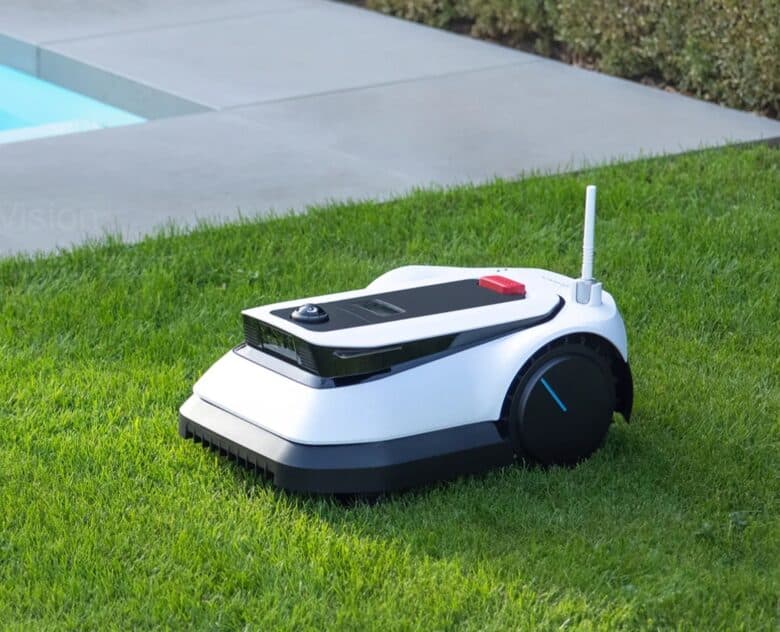
Damage to the wires, such as that caused by lawn mowers, can also drive gardening enthusiasts up the wall. Since the damaged area is usually difficult to locate, the wires then often have to be completely relaid. So it’s no surprise that some companies have been meticulously working on wire-free alternatives. With the Ecovacs Goat G1 (test), we were already able to put a model of this type through its paces this year. And the result was positive. The RoboUP T1000 goes one step further. After all, you don’t need any transmission towers here. Instead, the robotic mower relies on GPS signal and a RTK module sitting in the charging station.
Technical data
| Dimensions and weight | 620 x 445 x 250 mm and 10.9 kg |
| Cut width | 20 cm |
| Cut height | 30 to 60 mm |
| maximum slope | 45% |
| volume | 56 dB |
| max. lawn size | 1,000 m² |
| Navigation | GPS and RTK module |
| Sensors | Ultrasonic and VSLAM camera |
| Operation | Operating unit on the device or app |
| Voice control | Amazon Alexa and Google Assistant |
| Battery | 2,500 mAh provides 60 min. mowing time |
| Protection from water | IPX6 |
| Price | € 32.90 * |
Scope of delivery
Those looking for the RoboUP robotic mower should not be confused. After all, the manufacturer offers its smart garden helper in two different versions. While the T500 is suitable for lawns of up to 500 m², the T1000 tested by us should even suffice for green areas of up to 1000 m². But that’s not the only difference between the models. On top of that, there’s a handy VSLAM camera in the T1000, which is supposed to significantly improve orientation.
Inside the rather unassuming packaging of the RoboUP T1000 are:
- Robot mower
- Charging station including mounting screws
- 10 m long charging cable (incl. power supply)
- Tools
- RTK module (with optional bracket and connection cable)
- 8x spare blades
- Operating manual
- QR sticker for charging station
RoboUP T1000 review: eye-catching design and good workmanship
- Resistant housing (IPX6)
- Catchy red color scheme
- Compact design with just under 11 kg weight
At just under 1,900 euros, the RoboUP T1000 is once again significantly more expensive than the model from Ecovacs. Of course, the demands I make on the build quality are correspondingly high. And they were met. The striking red garden helper scores with a high-quality overall impression. The durability is also no reason to complain. After all, the model offers IPX6 certification, which promises reliable protection against damage caused by water.
However, this should be self-evident for a technical device that is exclusively used outdoors. A look at the top side reveals the obligatory stop button as well as a display and control unit. On the right side are the ultrasonic sensors, which are supposed to provide good orientation even in poor light conditions. The VSLAM and AI camera, which are also used for orientation and reliable obstacle detection, are located at the front. Furthermore, the charging contacts and two headlights are located here.
RoboUP T1000 Test: Combating manure residues
- Side placement of mower unit provides precise mowing edge
- Slopes up to 45% possible
- Thick rear tires provide grip
On the underside, there are two large wheels in the back and two small, movable wheels in the front. On top of that, the blades are located here. The manufacturer places these on the edge. An Achilles heel of the competitor from Ecovacs was the performance at lawn edges. The rather high distance between the blades and the edge of the casing meant that lawn strips were sometimes not mowed. By placing it close to the edge, the RoboUP wants to eliminate this problem in advance. And the plan works. Thus, the remaining lawn edge is significantly smaller than with the Goat G1.
The wheels themselves make it clear that the RoboUP is not only perfectly capable of traversing flat gardens. It can also negotiate rough terrain with small hills well, thanks to the well-designed metal suspension of the two front caster wheels. According to the manufacturer, even slopes of up to 45% should not be a problem for the garden robot. The same applies to roots and smaller holes. The two thick rear tires again provide the best grip – even in bad weather conditions. Since I was able to test the T1000 in rainy weather with correspondingly poor soil conditions, I can confirm the good grip.
Unfortunately, it is not possible to determine how it looks on slopes with my planned garden area. However, it is certain that this model is a comparatively lightweight robotic mower. With its 11 kg, it weighs almost 2.5 kg less than the competition from Ecovacs. Whether it can provide the necessary grip on higher slopes is therefore doubtful. All in all, the T1000 scores with an eye-catching look, a robust design and a high build quality.
RoboUP T1000 review: wireless navigation technology thanks to GPS
- Orientation without boundary wire
- GPS signals provide navigation
- Reception of the signal sometimes unreliable
In order for the T1000 to drive through your garden in a targeted manner and not according to the chaos principle, a good orientation is the key. As mentioned earlier, it does not rely on perimeter wires for this. Instead, a wireless alternative is used. At its heart is a built-in GPS system. Like a smartphone or a classic navigation system, the smart garden helper can find its way around with the help of satellite signals.

However, this is not enough in the garden. After all, it is sometimes a matter of decimeters or even centimeters here. To ensure more accuracy, a so-called RTK module is also used. In a way, this takes over the task that the Ecovacs Goat G1 was assigned to the receiver and transmission masts.
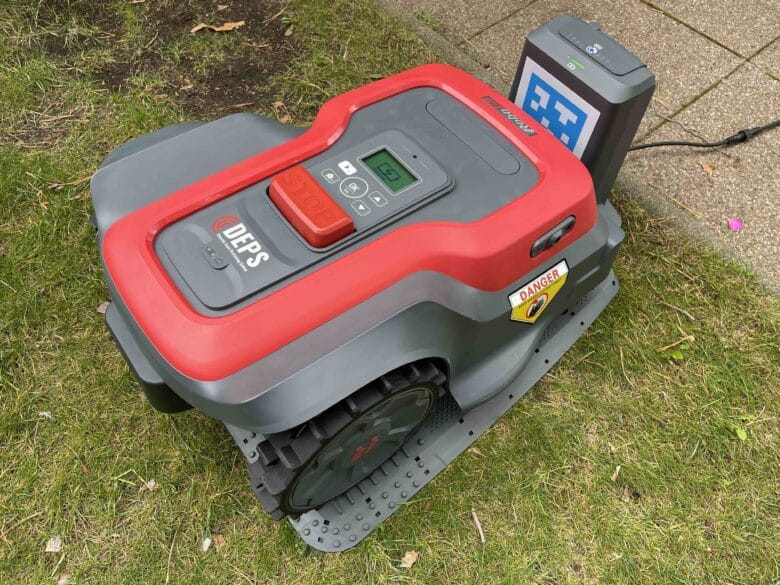
However, the T1000 has the edge here, at least in terms of looks and suitability for everyday use. After all, the RTK module can be conveniently installed in the charging station. Here, it is invisible to a certain extent and not nearly as conspicuous as the masts from Ecovacs. Like the robot itself, the RTK module communicates with satellites, amplifying accuracy immensely.
RoboUP T1000 test: external mounting possible
- RTK module can be mounted externally
- LED light on charging station reflects reception strength
Behind this is the technology of so-called real-time kinematics. This ensures very high precision through the interaction between moving satellites and stationary RTK module. The only important thing is that the charging station including RTK unit is located in the open air. Otherwise, the navigation capability is clearly limited. However, the manufacturer includes a separate mount for the module for any problems. This way, you can also place it separately. Places like the roof of a house or the top of a carport are particularly suitable for this. You can see whether the module has sufficient GPS reception from an LED unit on the charging station itself.

If this lights up permanently, there is a stable and reliable GPS connection. If the opposite is the case, you should seriously consider an external mount. Alternatively, you can also take a look at the app. The status of the GPS connection is also displayed here. If you do not feel like an external installation, you can also try to solve the problem by changing the position of the charging station. It is best to look for an area without trees and high buildings. If you remove the module, you can easily cover the opening in the charging station with the included flap. The manufacturer has thought along very well here.
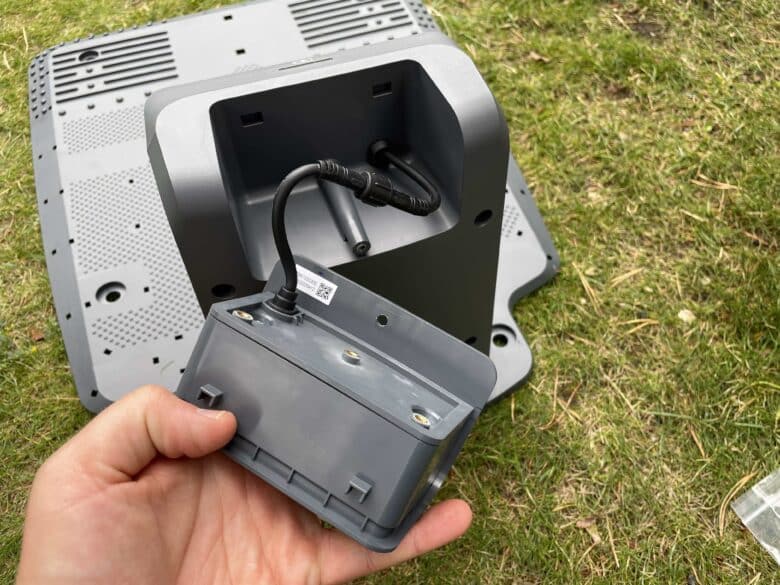
Personally, I struggled a lot with the GPS signal. Since I couldn’t find a suitable place to install the RTK unit externally, I repositioned the charging station. In doing so, it took a few attempts before I was able to get a stable reception of the satellites. This surprised me, since I followed all the manufacturer’s instructions. I stayed away from trees and buildings and placed the station in the open air. Finally, I found a suitable signal, but it was not really stable. While the reception was great one day, the robot could not receive a GPS signal the next day.
RoboUP T1000 test: obstacle detection thanks to VSLAM and AI
- VSLAM camera with AI support at the front
- Side ultrasonic camera provides orientation at the lawn edge
If a vacuum robot should ever lose its orientation, this can have no dire consequences. Here you have to reckon with mini scratches on sensitive furniture at most. The situation is different with robotic mowers. After all, they are equipped with blades. This is also the case with the T1000. Here, three rotating blades are used, which may well pose a potential risk to humans and animals, but also your favorite plant.
All the more important is an object or obstacle detection system that offers safety even when the RoboUP has no GPS signal available at the moment. The T1000 uses two cameras that act independently of the GPS orientation. These are intended to protect smaller animals in particular, such as hedgehogs, from damage or even death.
In the test, the obstacle detection worked quite well. Footballs and other objects were reliably avoided. Thanks to the artificial intelligence used to process the images, the detection should get better and better over time. The sensor package is rounded off by a side ultrasound camera. This is intended to ensure that the robot travels parallel to lawn edges.
RoboUP T1000 Test: The Mowing Test
After taking a closer look at equipment and technical details, we want to put the robotic mower under the microscope in practice.
Quick setup
Smart gadgets should offer one thing above all: Ease of use. And this starts as soon as the device is put into operation. The RoboUP T1000 is ready for use surprisingly quickly. It all starts with finding the right place for the charging station.
Since the included power cord is just under 10 meters long, the robot gives you quite a bit of freedom in positioning here. Once you have found a suitable location for the station and RTK module, you simply attach them using the included ground screws and connect them to the power.
Map creation manually or automatically possible
Subsequently, it can already go to the map creation. This is what the T1000 needs to find its way around your garden. Unlike the Goat G1, you have two options here. First, you can use the app to send the robotic lawnmower through your garden like a remote-controlled car. In this case, you drive along the boundary line to define the desired mowing area.
In addition to this principle, which is also known from the Ecovacs, the T1000 also offers automatic map creation. Here, it uses its side ultrasonic camera to independently detect the lawn zones. This is extremely convenient and worked quite well in my case, thanks to raised lawn edges.
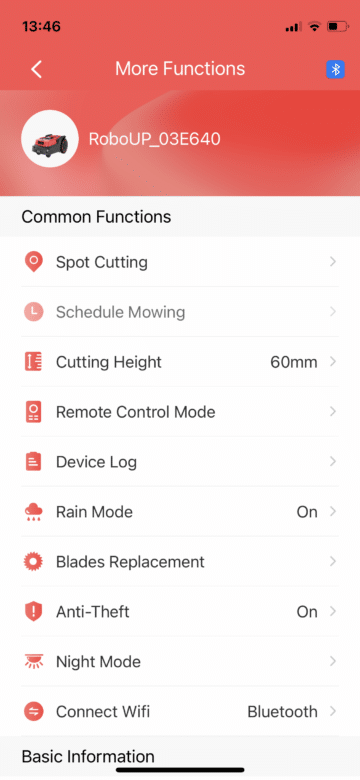
From time to time, however, it unfortunately seemed a bit disoriented, which is possibly due to the GPS problems. Thus, you can ensure the highest possible accuracy when mapping by using the app’s remote control. You also use the remote control when you want to set so-called no-go areas. In this way, obstacles such as trampolines, flower beds or trees can be defined in advance as places to be avoided on the map.

If you have a nested garden, you can easily save it in different zones. Up to ten different zones are possible in this way. The robotic lawnmower then moves from zone to zone via so-called passages, which you also define. Unfortunately, the robot sometimes had problems finding the previously defined passage. This not infrequently resulted in an error message and a passage had to be reprogrammed.
Practice
When the T1000 made its passes through my yard, I was initially pleasantly surprised. However, after a few minutes of driving, one or the other navigation problem presented itself. So the robot deviated from its paths every now and then and circled confused through my garden. A look at the LED and the app made it clear that it could not always have been due to a lack of GPS reception. Instead, the robot seems to simply have navigation problems.

Occasionally, it did not find its way back to the charging station after mowing and simply stopped on the lawn. The partly chaotic navigation then also ensures that the T1000 needs quite a lot of time for a mowing process. It mowed my area of just under 70 m² within just under two hours. In view of the rather high price, this is unfortunately somewhat disappointing.

I place my hopes in the AI features in this regard. Maybe some updates in the future can provide better orientation. What you can’t complain about at all, however, is the mowing performance itself. Especially the performance in the peripheral area is clearly better than in the Goat G1. Here, sometimes only a few centimeters, if not millimeters, of unmowed lawn remain. So in conclusion, it can boast a great mowing result if there are no orientation problems.
Conclusion
The RoboUP T1000 is a solid robotic lawnmower that primarily scores with its mowing performance. In particular, the focus on mowing as close to the edge as possible ensures that you get clean results here. The operation is also well done. Thanks to intuitive control on the device or via app and quick setup, even newcomers to the field of robotic mowers can easily find their way around. A real highlight is of course the lack of boundary wires or transmission towers. What sounds excellent in theory actually worked very well from time to time. However, not always.

Occasionally, the robotic mower had serious orientation lapses in my test, although the app and charging station attested to a good GPS signal. This ensures that the T1000 unfortunately works quite unreliably and, above all, slowly. In view of a quite high price, we cannot yet give a purchase recommendation at this point. However, there is hope that the RoboUP T1000 could possibly get its orientation problems under control in the course of updates. Should this succeed, the combination of great mowing performance and completely wireless navigation would make for a really great robotic mower.
RoboUP T1000
Workmanship & design
Usability
Navigation
Mowing performance
Value for money
82/100
The RoboUP T1000 scores with a great mowing performance. However, in view of the unreliable navigation and the very high price, we cannot currently give it a purchase recommendation.



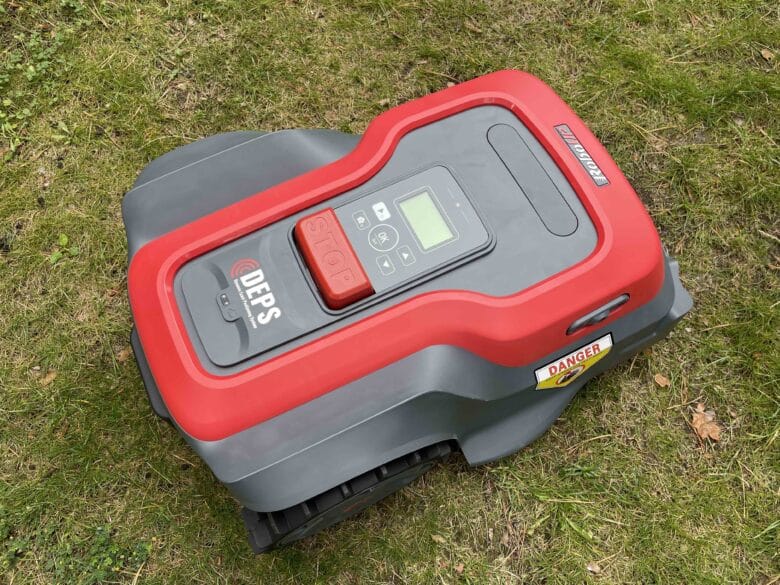
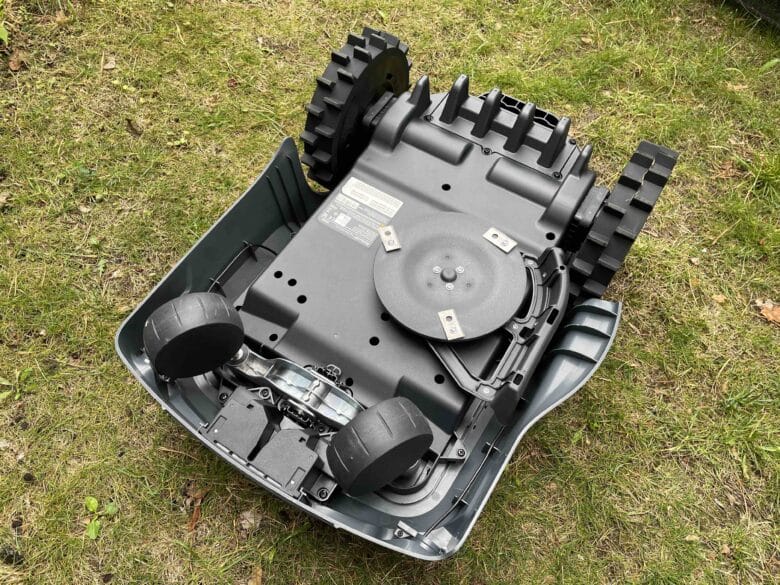


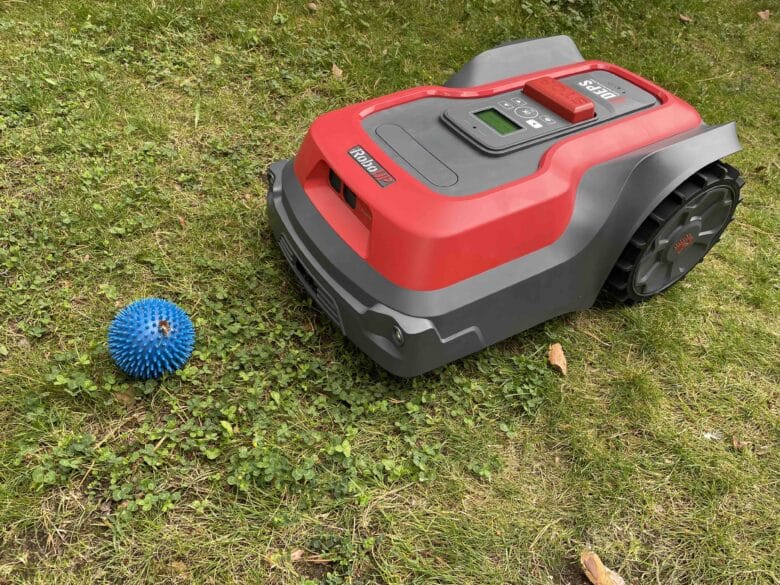
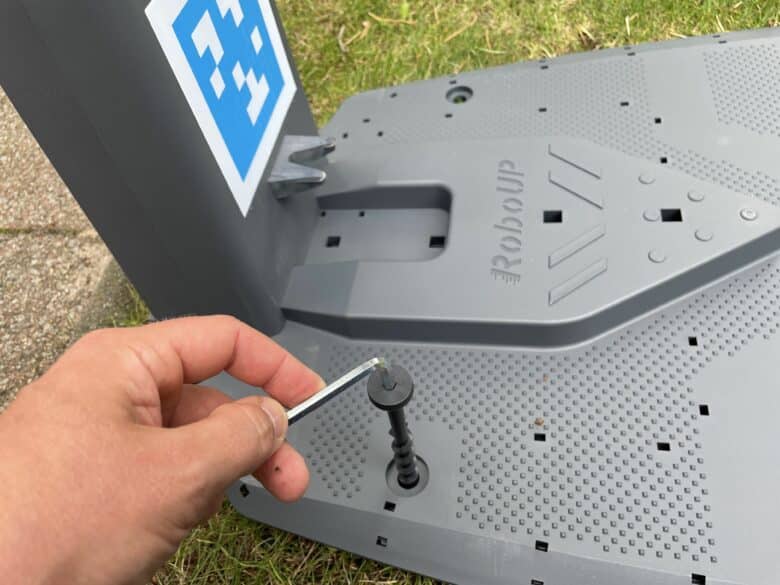


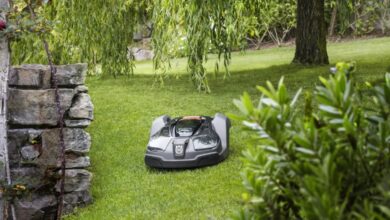
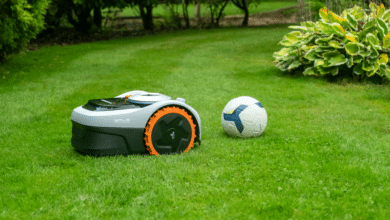


No replies yet
Neue Antworten laden...
Gehört zum Inventar
Beteilige dich an der Diskussion in der Basic Tutorials Community →